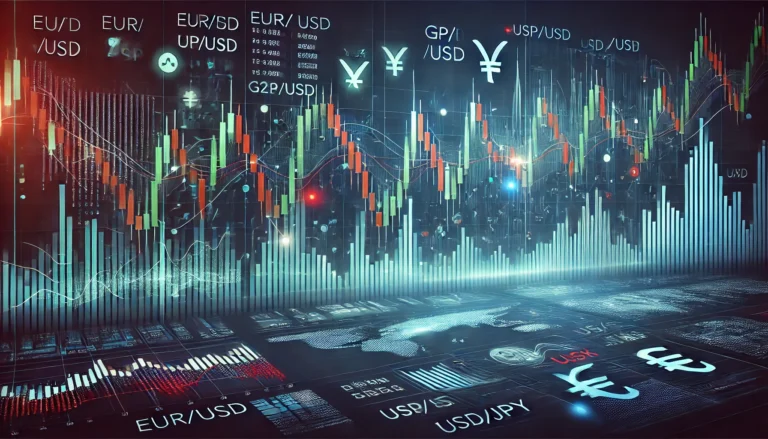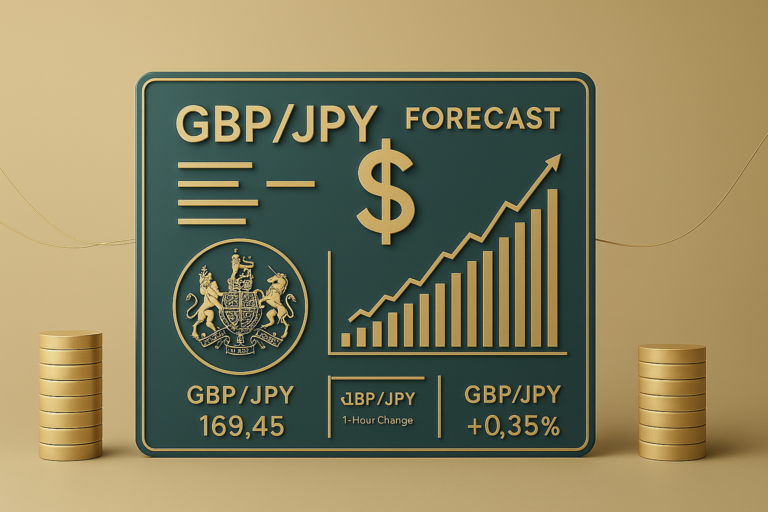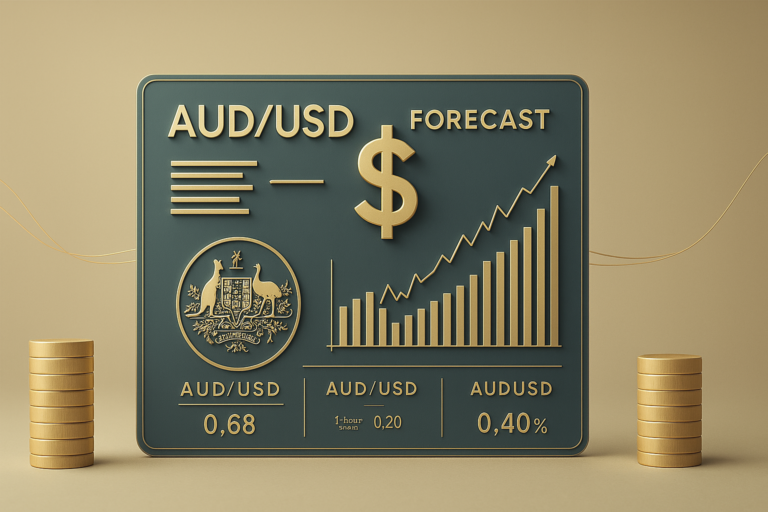
Foreign exchange day trading involves quick trades in the Forex market, offering high rewards but also high risks.
Foreign exchange day trading is an exciting and dynamic aspect of Forex trading. It involves buying and selling currency pairs within a single trading day, aiming to capitalize on short-term price movements. For both beginners and professionals, understanding the nuances of this fast-paced market is essential. The thrill of making quick profits can be enticing, but it’s not without its challenges.
Many traders struggle with foreign exchange day trading due to the rapid fluctuations in currency values and the complexities of market analysis. Emotion can cloud judgment, leading to hasty decisions. Therefore, learning and applying effective strategies is vital for success and financial benefit. Understanding the basics can help traders navigate this challenging landscape more confidently.
As we look ahead, the GBPUSD forecast for April 11, 2025 suggests potential movements that traders should consider. Staying informed about such forecasts can provide valuable insights into market trends.
Understanding the Foreign Exchange Day Trading
Foreign exchange day trading can be challenging, especially for those new to the Forex markets. The core issue lies in the volatile nature of currency prices, which can change rapidly due to various factors. For instance, news events can drastically affect currency values in a matter of minutes. This volatility often leads to fear, causing traders to exit positions prematurely or hold on for too long, resulting in losses.
Market-related reasons include economic data releases, geopolitical events, and even central bank announcements. For example, if a country releases unexpectedly strong economic data, its currency may surge. A trader who anticipates this might buy the currency, but if they hesitate or lack a clear strategy, they could miss out on significant profits. Moreover, technical issues, like platform glitches, can hinder executing well-planned trades. These situations highlight the importance of preparation and adaptability in foreign exchange day trading.
Pro’s and Con’s for Foreign Exchange Day Trading
Foreign exchange day trading has its advantages and disadvantages. Let’s dive into both sides.
Pros of Foreign Exchange Day Trading
- Potential for Quick Profits: Traders can earn money quickly by taking advantage of small price movements throughout the day.
- Flexible Trading Hours: The Forex market operates 24 hours a day, allowing traders to choose their preferred trading times.
- Variety of Currency Pairs: Traders can select from multiple currency pairs, providing diverse opportunities for profit.
Cons of Foreign Exchange Day Trading
- High Risk: The potential for loss is significant due to rapid price changes.
- Emotional Strain: The fast-paced nature of day trading can lead to stress and poor decision-making.
- Requires Full Attention: Successful trading often demands constant monitoring of the market, which can be time-consuming.
To mitigate the challenges of foreign exchange day trading, consider these best practices:
- Develop a Trading Plan: Outline clear entry and exit strategies based on market analysis.
- Practice Risk Management: Use stop-loss orders and only trade with money you can afford to lose.
- Stay Informed: Follow financial news and economic indicators that may impact currency movements.
For those managing their accounts, understanding how to fix account balance issues can also improve your trading experience dramatically.
Frequently Asked Questions
Here are some common questions about foreign exchange day trading, along with detailed answers:
1. What is the best time to trade in the Forex market?
The best time to trade is often during the overlap of major sessions, particularly when the London and New York markets are both open. This period offers higher liquidity and more significant price movements, increasing the likelihood of profitable trades.
2. Can I day trade in Forex without experience?
While it is possible to start day trading without experience, it is highly advisable to educate yourself first. Practice with a demo account to understand the market dynamics and develop your trading skills before risking real money.
3. What tools do I need for successful day trading?
Key tools include a reliable trading platform, charting software, and access to economic news sources. Additionally, many traders use technical analysis tools to identify trends and potential entry or exit points.
4. How do I manage my emotions while day trading?
Emotional management is crucial in Forex trading. Techniques such as setting strict trading rules, taking breaks, and maintaining a trading journal can help you stay disciplined and focused on your strategy.
5. What are the most common mistakes in Forex day trading?
Common mistakes include over-leveraging, neglecting risk management, and allowing emotions to dictate trading decisions. Being aware of these pitfalls can help you avoid them.
Conclusion
In summary, foreign exchange day trading offers exciting opportunities but also presents various challenges. By understanding the market dynamics and applying effective strategies, traders can manage their risks and improve their chances of success. Stay informed and continuously work on refining your trading strategies.
User Engagement & Encouragement Never stop learning! The world of foreign exchange day trading is vast and ever-changing. Stay curious, ask questions, and share your experiences with fellow traders. Together, we can grow and succeed in this exciting journey!
Recommended Next Steps
To further enhance your knowledge of foreign exchange day trading, consider the following steps:
- Read books on Forex trading strategies.
- Join online trading communities for support and advice.
- Practice consistently using demo accounts to test your strategies.
- Keep up with economic news and trends that affect currency values.
By taking these steps, you can build a solid foundation in foreign exchange day trading and increase your chances of success.
Looking to go beyond the basics? This resource offers deeper insights Investing.com, IG Group
Expand Your Knowledge
- 📌 Forex Trading Learning Road Map
- 📌 Forex Trading Course with no Fees
- 📌 Forex Trading Issues, Problems, and Solutions
- 📌 Forex Daily Forecast & Live Updates
- 📌 Forex Fundamental & News Analysis: Tomorrow’s Market Movers & Trade Opportunities
- 📌 Forex Education Hub: Learn & Profit
- 📌 Forex Technical Analysis, Indicators & EA’s
Start Trading Today
Ready to take your forex trading to the next level? Open an account with Exness, one of the most trusted platforms in the industry. 👉 Sign Up Now and trade with confidence!
My recommended broker stands out with ultra-low spreads for beginners, instant withdrawals, and zero spread accounts for pro traders.
Trusted since 2008, lightning-fast execution, no hidden fees, and a secure, transparent trading environment—giving you the edge you need to succeed. 🚀
Watch this helpful video to better understand foreign exchange day trading:
Note: The video above is embedded from YouTube and is the property of its original creator. We do not own or take responsibility for the content or opinions expressed in the video.
The video on Forex Trading provides a comprehensive introduction to the world of currency trading, designed for beginners and those looking to enhance their understanding of the market. The presenter begins by explaining the basics, such as what Forex (foreign exchange) trading is and how it operates. Forex trading involves buying one currency while selling another, with the objective of making a profit from the fluctuations in exchange rates. The presenter highlights that the Forex market is the largest financial market globally, with a daily trading volume exceeding $6 trillion. This vast market is open 24 hours a day, making it accessible for traders worldwide, and it can be traded via various platforms, including mobile apps and desktop software.
The video also emphasizes the importance of education and research in successful Forex trading. The presenter discusses various strategies that traders can adopt, such as technical analysis, fundamental analysis, and risk management techniques. Technical analysis involves studying historical price charts to identify patterns, while fundamental analysis entails examining economic indicators and news events that may affect currency values. The importance of setting stop-loss orders to limit potential losses and managing risk effectively is also stressed. Overall, the video serves as a foundation for aspiring Forex traders, encouraging them to keep learning and practicing to develop their skills and strategies for navigating this complex market successfully.
In Malaysia, Forex trading is gaining popularity as more individuals seek alternative investment opportunities. The Malaysian financial landscape has evolved to accommodate Forex trading, with regulatory frameworks in place to guide traders. Aspiring traders in Malaysia can benefit from various educational resources and training programs available both online and offline. Many local brokers offer demo accounts that allow newbies to practice trading without risking real money. Additionally, the Malaysian government has recognized the importance of Forex trading in the financial sector, leading to the establishment of guidelines to ensure a secure trading environment. For those interested in starting their trading journey, exploring forex in malaysia can provide valuable insights and tips for success.






